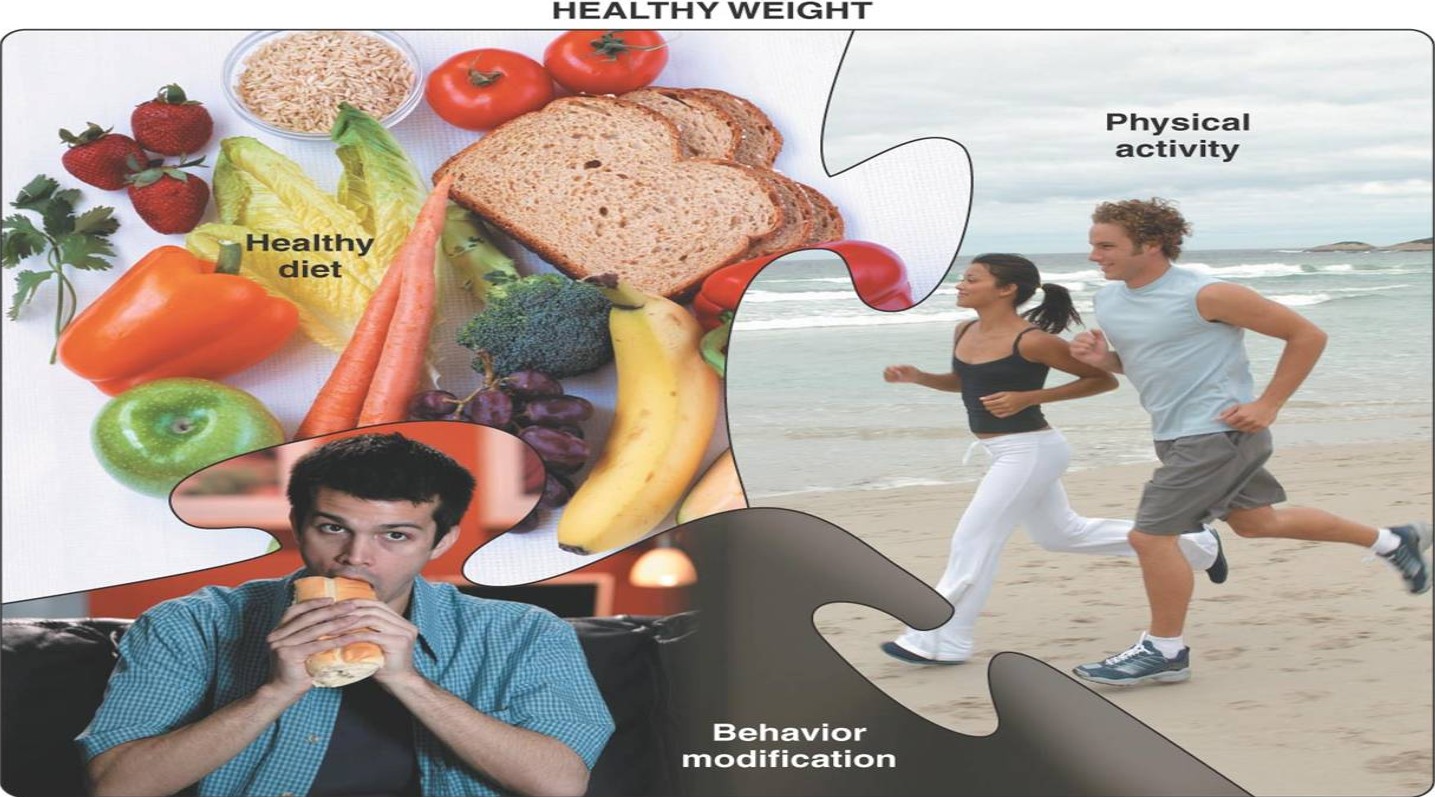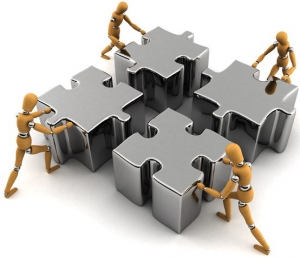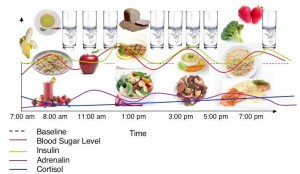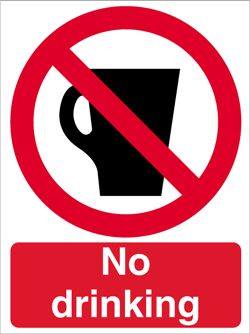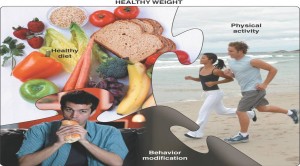 Putting together your Weight Management puzzle
Putting together your Weight Management puzzle
The 10 lap band rules were established to guide patients to the eating and behavior modification that is necessary for the care and function of the Lap Band to aid in weight loss and weight management. Sort of like your cars ownership manual helps you to care and maintain proper use of your vehicle.
The 10 Lap Band Rules for the most part are common sense practices to healthier eating, and are a good set of guidelines for everyone, not just Lap Band patients. But for patients that have had Lap Band Surgery it is especially important to follow these rules to prevent complications.
Following the band rules will assist in:
A healthy weight loss (average of 1-2 pounds a week)
Improved eating habits and lifestyle
Ability to maintain your weight loss
Improved nutrition and fitness level
Avoidance of complications associated with proper use of the band
The Lap-Band rules are not hard to follow, but, can take some time to become a habit. You will need to adjust habits that you have been doing all your life and may be hard to break. It is very important after surgery to become very familiar with these rules and follow ALL, not just some, but all the rules for your continued success as a banded patient.
The Lap Band Rules are at the center of your weight management puzzle.
Weight loss begins when you start putting together the Weight Management puzzle. And continues, the more pieces you put together. Remember, it takes time to change old habits. You will need to be very diligent at practicing following the rules. But with daily practice these rules will become second nature. Having a copy of the rules in a place to remind you (like the refrigerator) is recommended.
10 Lap Band Rules
1. Eat only three main meals a day, plus two planned snacks.
If you are snacking all day long how will you know when you are truly hungry?
Make a plan to eat three small meals and two planned snacks spread three to four hours apart when true hunger comes on. This will help you to learn your hunger signals and when you are no longer hungry. Keep practicing and it will become automatic.
2. Eat slowly, taking very small bites. Chew thoroughly until your food is a mushy consistency.
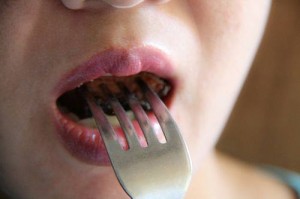 Chew, Chew, Chew, break down your bites to a mushy consistently. This is probably one of the hardest rules to master. Why? Because it just does not feel natural. Most people go on auto pilot or are distracted when they eat. Barley chewing and swallowing food without even noticing the texture and flavor of their food.Taking those tiny well chewed bites do several things that help you with weight loss.
Chew, Chew, Chew, break down your bites to a mushy consistently. This is probably one of the hardest rules to master. Why? Because it just does not feel natural. Most people go on auto pilot or are distracted when they eat. Barley chewing and swallowing food without even noticing the texture and flavor of their food.Taking those tiny well chewed bites do several things that help you with weight loss.
First it slows you down and helps you to be more mindful of what you are eating. You will savior the flavor and experience the food more mindfully.
Slowing down also helps you to become more mindful of when to stop eating. You will be able to recognize your fullness cues and stop before you overeat. If you speed through a meal those subtle cues are easy to miss. Eating slowly gives your brain time to catch up to signal fullness approaching.
Taking small bites and really chewing your food aids in digestion.
Taking small well chewed bites will make it more comfortable to eat after you start to receive “fills” to your Lap Band. You will not experience the problems associated with eating too fast like; the golf ball effect or a PB episode.
It is essential that all Lap Band patients practice and master this rule. You may forget from time to time if you are distracted, but being mindful with every bite is essential to your success and prevent problems that can result if not followed.
3. Limit your food portion to no more then ½ c to 1½ c.
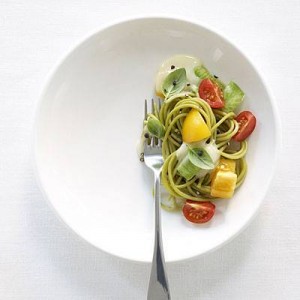 Stop eating….
Stop eating….
- If you feel restriction from the band.
- Feel satisfied,full or no longer physically hungry (this will feel different from the “full” sensation you had prior to your surgery.)
- You have eaten ½ to 1½cup total volume of food
If you have ever experienced feeding a small child you would know to limit their portion of food to just a small amount. Because you know that a small child is not capable of eating a huge amount of food.
So with that in mind a Lap Band patient should think of themselves as a small child just learning to eat. Why would you add a large amount of food on your plate when you know you need to limit it to a small portion?
Don’t get in the habit of testing your Lap Band to stop you from over eating. If you have too much on your plate and are enjoying your food you may end up ignoring your signals that you are no longer hungry and push past the point when you should have stopped. If you are set on over eating you WILL find a way to accomplish it.
By limiting the amount you put on your plate, you are saying “this is the amount I should be eating” and will be more aware of your fullness ques when they come. When you have a full plate, all you will be thinking of is the next bite.
Remember the Lap Band is designed to help you recognize fullness sooner, so you stop after eating a smaller portion of food. Not act as a restraining collar preventing you from being able to eat.
4.Do not drink with meals, or for one full hour after eating.
To fully understand why this rule is so important to master it helps to have a better understanding of how the stomach and digestion work.
The stomach is a powerful muscle that contracts around the food in a churning motion. The stomach release gastric acid (made up mostly of hydrochloric acid) to further break down food as it’s churned. As food is broken down enough the pyloric valve (a trap door, really) opens to let some food particles out of the stomach and into the small intestine. This churning process continues and the pyloric valve will keep opening and closing as more food is prepared for release. This process can take 2 to 3 hours in a normal stomach.
The more dense the food, the longer it can stay in the pouch. The softer and more liquid the food, the sooner it will empty from the pouch. Dense food can stay in your pouch for 1.5 to 2 hours if you don’t drink water. But the moment you add water (or any liquid) to the pouch, you are creating a “soup” that will quickly empty out of your pouch.
If you have dense food that has not yet begun to be digested in the pouch and you drink water you are forcing dense food through the stoma prematurely. The opening is only about the size of a lady’s index finger, but if you habitually push food through the opening before its ready to go, you’ll eventually stretch the stoma.
Of course when your pouch is empty you’ll get hungry sooner. For new post-ops, this isn’t a major concern because the hunger hasn’t returned fully. But for those further out from surgery, the hunger can be ravenous for some and the primary way to stave off hunger is to keep food in the stomach pouch for as long as possible. This is why it’s recommended that the further out you are from surgery, the longer you wait to begin drinking after meals (60-90 minutes).
5. Do not eat between meals, or planned snacks.
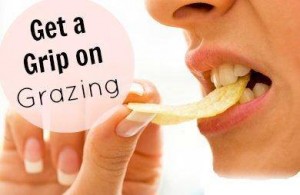 A nibble here, a nibble there. All those nibbles may be dong more then just adding extra calories to your day.
A nibble here, a nibble there. All those nibbles may be dong more then just adding extra calories to your day.
If you are constantly grazing on food all day, how will you know when you are truly hungry?
Grazing or eating between planned meals and snacks makes you less sensitive to determining true stomach hunger and can make it easier to get confused with a multitude of other signals, stimuli, and needs.
Your Lap Band will work most effectively when you eat ONLY in response to true physical stomach hunger.
First lets discuss what is true Stomach hunger
Stomach hunger–or physical hunger–involves a complex interaction between the digestive system, endocrine system and the brain. When the body needs refueling, we start feeling tired and weak, while finding it harder to concentrate and work. The stomach, which is located just below the ribcage, starts to ache and rumble. This is true stomach hunger. When we begin eating in response, we really enjoy the food and start feeling better, because a bodily need is being met.
“False Alarm” signals are often confused with stomach hunger?
Sometimes, we mistake other signals in our bodies for physical hunger. They are legitimate sensations, but not true stomach hunger. Here are some examples:
“Teeth Hunger”
Sometimes, especially if we’re feeling irritated or stressed, we want to chew our frustrations away. Our bodies are not calling for food, but we put it in our mouths as an attempt to relieve anxiety.
“Mouth Hunger”
We see or smell something that looks so delicious that our mouths start to water. Sometimes just thinking about a food brings on a craving for it. We desire to taste the food, but really aren’t physically hungry.
“Mind Hunger”
We look at the clock and think we have to eat a certain amount of food because “it’s time”, even if we don’t feel like eating.
Thirst
Sometimes we confuse the sluggishness of dehydration with actual hunger. The body is calling for fluids, not food.
Fatigue
When we sense that our energy levels are low, some of us automatically think that if we eat something, we’ll feel better. However, if we’ve been working extra hard and/or haven’t been getting enough sleep, our bodies are calling for rest, not food.
“Heart Hunger/Emotional Hunger”
We feel an ache and emptiness in our hearts due to unmet emotional and/or spiritual needs. Rather than acknowledge our feelings and work through our issues, we try to fill the void with food. Or sometimes we try to use food to “stuff” our feelings down. Although there can be physical discomfort in the gut when we’re upset, it is a distinctly different sensation from stomach hunger.
As you can see, the simple design of physical hunger and fullness is often overshadowed by other body signals, habits, needs and emotions. Identifying and dealing with them appropriately is a huge step in the process of discerning true stomach hunger.
If you’ve been ignoring your hunger and fullness signals for a long time, you may have temporarily lost your physical sensitivity to them. This is often the outcome of frequent dieting, chronically restricting food intake, being raised to “clean your plate,” or struggling with any kind of disordered eating. If this is the case for you, it may take some time to rediscover hunger and fullness cues.
Learning to eat intuitively–meeting your body’s true physical needs for fuel and nourishment–will help you naturally reach the healthiest weight for your one-of-a-kind body.
6. Eat a variety of high quality nutritious foods.
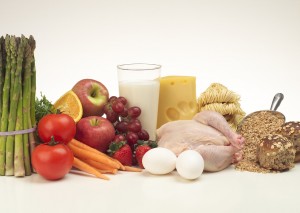 This rule is all about choosing the foods that are the best choice for your over all health and nutrition needs. But another reason this is one of our Lap Band rules is because eating healthy, filling foods can help you lose weight without feeling hungry.
This rule is all about choosing the foods that are the best choice for your over all health and nutrition needs. But another reason this is one of our Lap Band rules is because eating healthy, filling foods can help you lose weight without feeling hungry.
Certain foods make you feel fuller — and satisfy you longer — than others. These foods are the best choice after Lap Band surgery to help you eat a small amount of satisfying food and stop. You will feel great, because you will have met your nutritional needs and will not become hungry between meals making it easier to keep from having cravings.
Choose a strategy that will help you fill up while you slim down.
Fiber
Foods that are high in fiber fill you up on fewer calories. Whole grains, such as whole wheat breads and pastas, oatmeal, and brown rice, are complex carbohydrates that have more fiber and nutrients, and, typically, fewer calories than simple carbs like those in cake, candy.
Fruits and veggies
Many fruits and vegetables have high water and fiber contents, making them the ultimate low-calorie filler. Apples, pears, berries, broccoli, cauliflower are especially filling. Additionally, you should opt for whole fruit over fruit juice whenever possible. Whole fruit provides all the benefits of juice with an added bonus — fiber, which can keep you feeling full longer.
Lean protein
Research indicates that protein ranks high on the scale of foods that make you feel full and creates a greater feeling of satisfaction than other foods. The best choices are animal and plant proteins that are high in calories but low in fat. These include fish, white-meat poultry, fat-free dairy products, egg whites, legumes, beans, peas, and lentils.
Healthy fats
In addition to high-fiber whole grains, fruits and veggies, and lean protein, adding healthy fats to your diet is essential for many body functions including the absorption of fat soluble vitamins A D E and K. Use healthy oils in moderation because they are very calorie dense. For instance, you can add a spoonful of nuts or seeds to your salad and use a light olive oil-based dressing.
7. Consume recommended amounts of fiber daily.
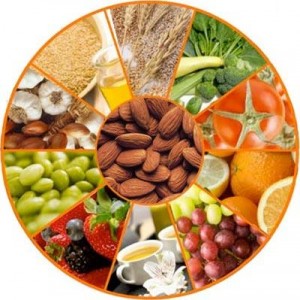 Fiber Recommendations
Fiber Recommendations
The recommended daily intake of fiber is 25 g per day for women and 38 g a day for men.
Getting all that fiber in is a tough order. That is why it is recommended to focus on fiber rich fruits and vegetables and a moderate portions of whole grains to make up the bulk of the foods that are consumed.
But why do we need so much fiber in the diet anyway?
Fiber plays a huge part in out over all health of our bodies and can prevent many serious heath conditions. Fiber can also facilitate weight loss. But also because of its bulking quality, fiber can make you feel full and prevent over consumption of calories during meals and snack times.
Fiber Health Benefits
Increased consumption of fiber can improve many aspects of health. Fiber-rich foods help to increase stool bulk, which helps to prevent constipation. In addition, fiber increases bowel integrity and function, thus minimizing the risk of conditions such as hemorrhoids and diverticulitis.
Fruits, vegetables and legumes that contain soluble fiber have been found to lower “bad” LDL cholesterol levels and slow the absorption of sugar in the body, which in turn can decrease the risk of diabetes and heart disease.
Because fruits and vegetables are also rich in water and dietary fiber, they enhance satiation. As low-calorie foods, fruits and vegetables can reduce feelings of deprivation. Fresh fruits and vegetables provide rich amounts of nutrients without added sodium or other preservatives and are lower in over all calories.
Most people with a Lap-Band fare well with two to four servings of fruits and vegetables daily. One serving of vegetables contains approximately 25 calories, the amount found in 1/2 cup cooked vegetables or vegetable juice or 1 cup of fresh vegetables, such as spinach, broccoli, cauliflower, asparagus, bell peppers or green beans. Non-starchy vegetables, such as iceberg lettuce, celery, cabbage and cucumbers, are considered “free,” or acceptable in limitless amounts. One fruit serving contains roughly 60 calories. Examples include one apple, 1/2 cup unsweetened applesauce, 3/4 cup berries, 1/2 banana, 1/2 cup fresh fruit juice and 1/4 cup dried fruit.
Whole grains provide rich amounts of vitamins and minerals, such as B vitamins, magnesium and iron. They also provide dietary fiber and promote greater satiation than refined carbohydrates
When planning your meals and snacks consider 50% vegetables and fruit, 20 whole grains and 25% proteins and 5% fats.
8. Drink 64-100 ounces of non-caloric fluids between meals.
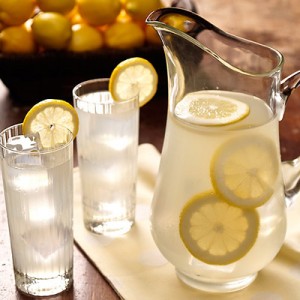 The water has many attributes to aid in weight loss. The first, and most obviously, it helps you to feel full.
The water has many attributes to aid in weight loss. The first, and most obviously, it helps you to feel full.
In one human clinical trial, researchers at Virginia Tech reported that individuals instructed to follow a low-calorie diet lose more weight when they’re told to drink 16 ounces of water before each of their main meals. In the study, those drinking water before meals lost 15.5 pounds in 12 weeks, compared to 11 pounds in the control group not drinking extra water. In another study of overweight adults, the same researchers found that after drinking 16 ounces of water, the calories consumed at the subsequent meal was reduced by 13%.
Water works for weight loss in not only helping you eat fewer calories at your meals, it can help limit liquid calories, which are consistently linked to weight gain. And since water provides no sweetness, unlike diet beverages, it helps to curb or contain a sweet tooth.
Research also suggests a slight increase in metabolism when water is consumed. After drinking approximately 17 ounces of water, the subjects’ metabolic rates — or the rate at which calories are burned — increased by 30% for both men and women. The increases occurred within 10 minutes of water consumption and reached a maximum after about 30 to 40 minutes.
The researchers estimate that over the course of a year, a person who increases his water consumption by 1.5 liters a day would burn an extra 17,400 calories, for a weight loss of approximately five pounds. They note that up to 40% of the increase in calorie burning is caused by the body’s attempt to heat the ingested water.
In addition, when you first start losing weight, you tend to lose “weight water” first, therefore replacing the water is essential. Especially if you started an exercise program as well, you can become dehydrated easily if you don’t replace your fluids often.
9. Do not drink carbonated beverages of any kind.
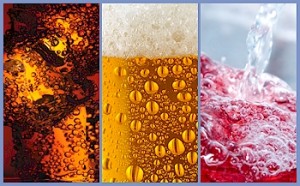 Carbonated beverages can threaten the life and effectiveness of your Lap Band.
Carbonated beverages can threaten the life and effectiveness of your Lap Band.
Have you ever shook up a can of soda and then opened it (or been a unsuspecting victim ) If you have, you know that carbonation when irritated reacts by expanding.
Now imagine your Lap Band and how it is meticulously placed. When you drink a carbonated beverage, the contents are disturbed and it expands (have you ever needed to belch after taking a sip?)
The carbonation below the band can cause distension of the stomach and be very uncomfortable. Theoretically, the carbonation above the band could cause movement of the band downward and dilation of your stomach pouch.
Carbonated beverages expand in the stomach up to five times the original volume consumed. Your chances of a band slip increase if you continue to put that kind of internal pressure on your band on a regular basis.
Is it worth the risk of losing your band due to complications that could have been avoided. Also ask yourself this question; What real benefit do you gain from drinking beer, soda, diet soda etc? Isn’t one of your goals to work towards healthier habits? Were does diet soda fit into that process?
Need a bit more convincing? check out the stats on the connection between Diet drinks and obesity https://www.lapbandsurgery.com/the-ticking-time-bomb/#.UlgXBhDhH0o
10. Exercise 30-60 minutes on most days.
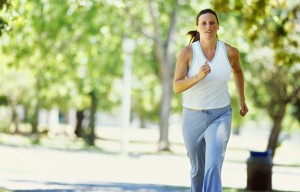 The bottom line is, exercise is good for you whether you have had lap band surgery or not. After you have had surgery may want to integrate it into your daily routine a little at a time, in order to facilitate steady weight loss. Depending on our age, your health, your weight, and your physical ability, exercise can mean anything from walking around the block to running five miles on the treadmill and everywhere in between.
The bottom line is, exercise is good for you whether you have had lap band surgery or not. After you have had surgery may want to integrate it into your daily routine a little at a time, in order to facilitate steady weight loss. Depending on our age, your health, your weight, and your physical ability, exercise can mean anything from walking around the block to running five miles on the treadmill and everywhere in between.
Benefits of exercise after Lap Band surgery include:
It burns calories
It firms your skin
It creates muscle which helps burn more calories
It creates those “happy hormones” that help you feel good and stay motivated
It reduces your risk for cardiovascular disease among other ailments.
Of course, you’ll need check with your doctor first to see if you have any existing health issues that may prevent you from some exercises. It is recommended to work with your health care provider regarding developing your exercise routine if you have some health concerns.
If you are having trouble following the rules we are happy to assist you. . You are not alone. We are here to help you.

